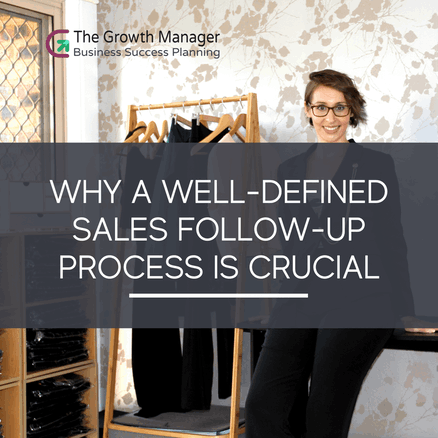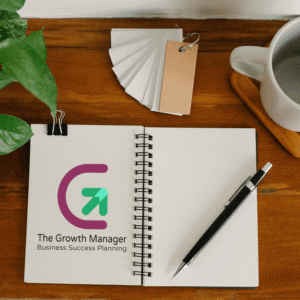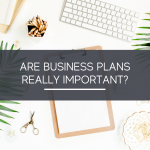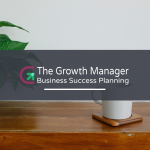Why Follow-Up Is Your Business’s Secret Weapon
It’s late. You’re about to switch off when your inbox pings. A name pops up—a prospect you spoke to weeks ago. No replies, no updates… until now. You scroll through your notes: “Loved your idea about X.” Heart quickening, you hit reply. You craft a thoughtful message, hit send, and exhale. Maybe this is the spark that brings the conversation back to life.
That moment is the power of follow-up. At The Growth Manager, we’ve seen countless small business owners turn silence into sales simply by reaching out at the right time, with the right message.
Why Follow-Up Isn’t Optional — It’s Essential
You wouldn’t ask someone to marry you on a first date—why expect a yes from a single marketing email or meeting? Follow-up isn’t pestering; it’s nurturing. It’s continuing the conversation you began.
Imagine your sales journey as a campfire. The first spark is discovery. Your follow-up is the tinder—you feed it small sticks of conversation, value, ideas, until it ignites into warmth. Without that tending, the flame dies.
Here’s the hard truth: 80% of deals close after five touches, yet most small businesses stop after two. That’s like stopping a marathon at the 2km marker.
 Building Your Follow-Up Process: Your Roadmap to Results
Building Your Follow-Up Process: Your Roadmap to Results
1. Plot Your Follow-Up Journey
Sketching out when and how you’ll follow up prevents opportunity leaks.
- Day 0 – Immediately after meeting or sending a proposal
- Day 2–3 – First gentle nudge with added value
- Day 7 – Reminder, maybe a relevant case study
- Week 3 – Check in with a question (“Would this help?”)
- Ongoing – Monthly (or quarterly) check-ins based on context
Use tools like Airtable
or your CRM to plot prompts. When you’ve got that timeline, no more crickets.
2. Mix Up Your Outreach
Picture receiving a LinkedIn DM that picks up a point from last week’s chat—it catches your eye more than yet another email. That’s why multi‑channel rocks.
Blend:
- Personalised emails
- Voice calls (brief, conversational check-ins)
- LinkedIn messages (mentioning a shared post or resource)
- SMS when suitable (e.g. confirming a meeting)
- Soft retargeted ads for web‑based businesses
Each touchpoint keeps you relevant, not annoying.
The Follow-Up That Converts: Words That Matter
Make It About Them
Avoid generic lines like “Just following up.” Instead, say:
“Hey [Name], I’ve been thinking about your strategy around [specific goal]. Got an idea you might like—can I share?”
This approach shows you’ve listened and genuinely want to help, not just sell.
Personalisation = Trust
Add small details. “I loved your story about your trip to Taipei—what a spark of inspiration!” Thirteen characters might take an extra 13 seconds, but they build trust that lasts.
Even if you’re using a template (like our Ultimate Sales Follow-Up Email Template), take 1–2 minutes to tailor it.
Give Them Value
Use follow-up to share something meaningful:
- A quick article summary related to their challenge
- A tool or template
- An intro to a peer who can help
When you offer without asking, it says: I’m looking out for you.
Tech to Help (Without Losing the Human Touch)
Let a CRM Keep You Organised
If you’re still winging it with reminders in your head, pause. CRMs like HubSpot, ActiveCampaign, or Zoho track who’s at what stage, set reminders, store chat notes, and measure what’s converting.
It’s not about automation replacing you; it’s about freeing your brain to focus on the people behind the leads.
Smart Automation = Time Saved
Your follow-up shouldn’t feel robotic. Use automation for the basics:
- A “Thanks for yesterday’s chat” email with next steps
- A value email 2–3 days later: Here’s that podcast I mentioned
- A “Just checking in—how’s the project going?” 2 weeks later
Then you jump in personally when it counts.
Don’t Just Send—Track
Without feedback, you’re throwing messages into the void.
Monitor:
- Email open rates
- Click-throughs on attached links
- Replies to each follow-up
- How long does it take to go from first contact to close
- Where people stall in the process
Seeing where prospects fade helps you adjust timing, tone, or message.
Follow-Up Pitfalls to Dodge
- Too much, too soon – Daily check-ins feel desperate. You’re building a relationship, not chasing a sale.
- Too late – If someone loved your idea, follow up within 24–48 hours. Otherwise, that spark fades.
- Generic outreach – If your message applies to anyone, it resonates with no one.
- No next step – Each message needs an invitation: “Want me to walk you through that resource on a quick call?”
- Giving up early – Sometimes relationships need time. Use check-ins to stay relevant.
Turning Follow-Up Into Connection
When executed well, follow-up turns prospects into clients and clients into advocates.
Picture this: You follow up consistently with meaningful updates. Six months later, a client refers you because “[Your Business] was the first to check in and genuinely care.” That is organic growth.
At The Growth Manager, we’ve helped clients double conversion rates purely by enhancing their follow-up. Not flashy graphics. Just consistent human engagement.
Final Thoughts
A sales pipeline without follow-up is like a book you never finish. Your prospects read the beginning… then the pages stop.
When you follow up well, you complete the story. You show up. You guide. You help. And more importantly, you earn trust.
That’s sustainable business growth.
What’s Next? Putting It Into Action
Not sure where to start? We’ve got you covered.
Our Ultimate Sales Follow-Up Email Template makes it easy to craft engaging and effective follow-up emails that feel both personal and professional.
Additionally, our Growth Guides provide step-by-step processes, tools, and templates for creating a powerful follow-up system tailored to your needs.
Explore the Growth Guides and Templates Library today and start mastering your follow-up game.
Because when your sales system runs smoothly, your business can grow with ease.






